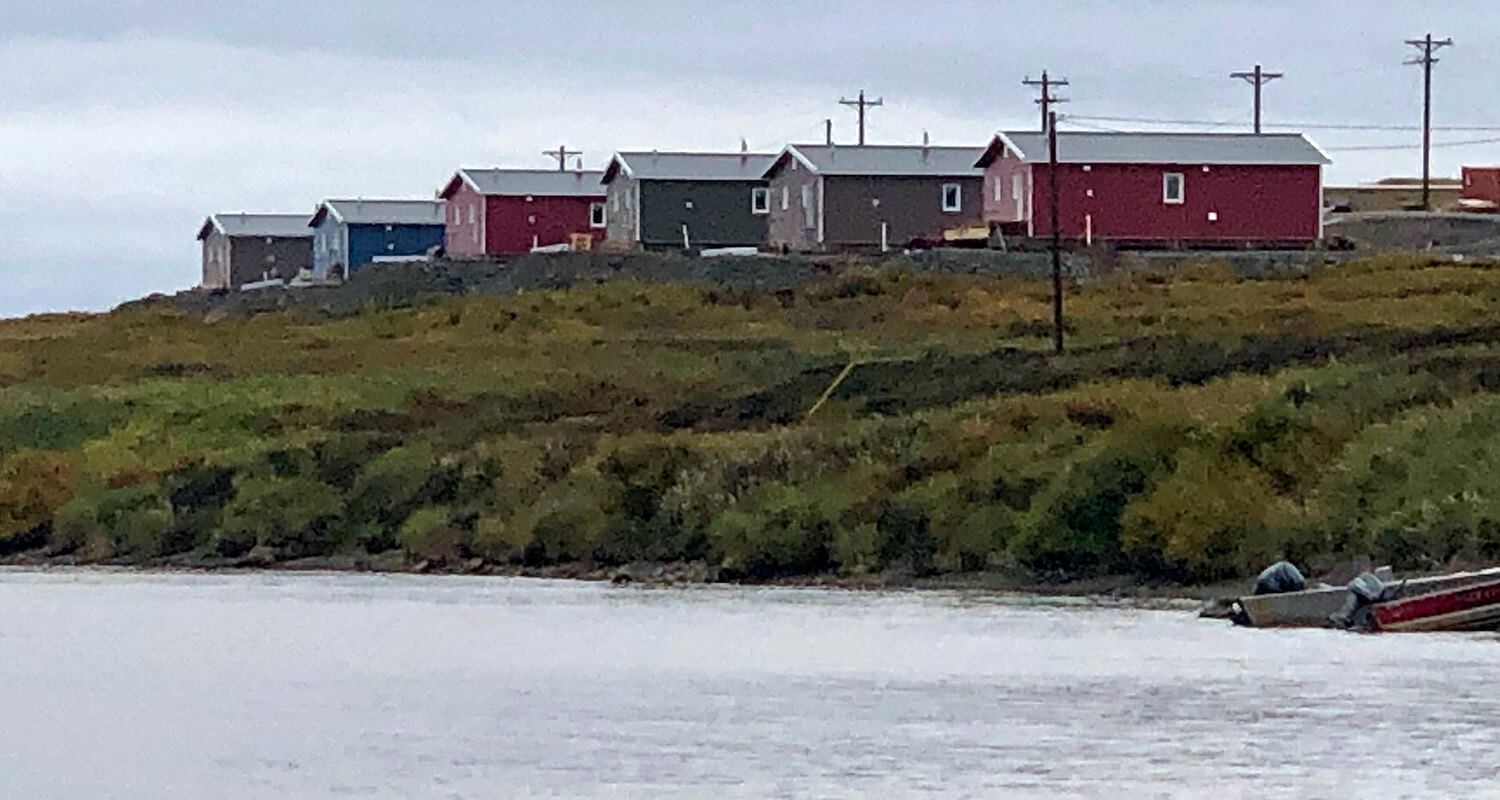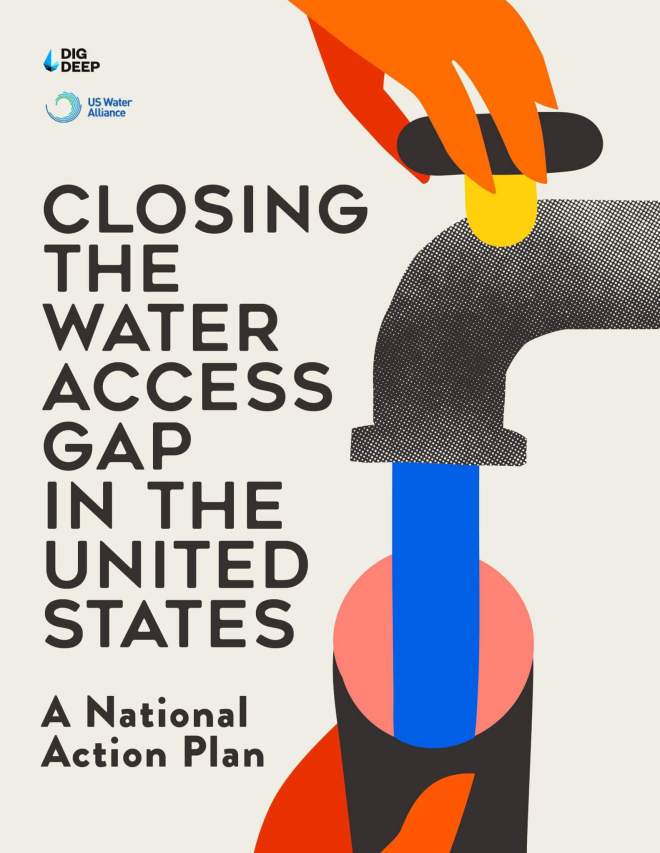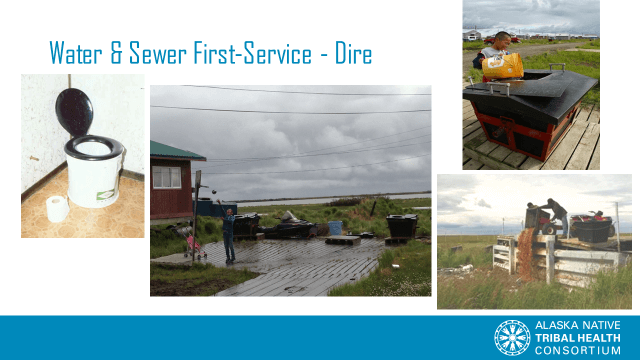
By Christie R. House
February 2020 | ATLANTA
Access to clean, reliable running water and safe sanitation are baseline conditions for health, prosperity and wellbeing. However, they remain out of reach for some of the most vulnerable people in the United States: communities of color, lower-income people in rural areas and tribal communities, among others. Today, more than two million Americans lack access to running water, indoor plumbing or wastewater services. Better water access would allow vulnerable communities to thrive.
Preface: “Closing the Water Gap in the United States”
On November 18, 2019, two nonprofit agencies, DigDeep, which works to ensure that every American has clean, running water, and the U.S. Water Alliance, a member-supported agency dedicated to building a sustainable water future for all, published a groundbreaking study on water access in the United States. “Closing the Water Access Gap in the United States: A National Action Plan,” reveals that more than 2 million people in the United States still lack access to clean running water, indoor plumbing and proper sanitation.
Support for the report was also provided by the Robert Wood Johnson Foundation, the United Methodist Committee on Relief (UMCOR), and the Water Foundation. Lorrie King, UMCOR’s director for Sustainable Development, served on the advisory council of national leaders who represented diverse sectors of the country, giving guidance and feedback for the report.
Why is this a first?
The fact that a comprehensive U.S. water access study has not been published before 2019 may come as a surprise to many Americans. Records on water access are fractured and scattered. Federal data doesn’t accurately measure the gap, as vulnerable communities have been undercounted and wastewater issues not considered.

Closing the Water Gap study analyzed Census and American Community Survey data, conducted in partnership with Michigan State University. In addition to the data analysis, researchers from each of the target communities were trained and imbedded to collect key informant data. King notes that having insiders work in their own communities is essential. This practice encourages residents to tell their own stories and share their challenges.
Among the findings, the research indicated that race is the strongest predictor of water and sanitation access. Communities of color are more likely to lack water access than white communities, a disparity particularly extreme for Native Americans. The study found Native American communities to be 19 times more likely to lack access to indoor plumbing than white communities. African-American and Latinex communities were twice as likely to lack indoor plumbing than predominantly white communities.
Access to indoor plumbing also correlated with household income, educational attainment, and unemployment rates, so poverty and lack of education is another key factor in lack of access to water.
The study indicates that the water access gap is not a matter of individual choice, rather, it is the result of historical and geographical factors that have left entire communities without adequate services. Progress is uneven, and in some communities, the situation is getting worse. For example, the number of people without basic plumbing in their homes is increasing in some states.
The study identifies six areas in the United States as most affected by limited access to water: California, because of drought and contamination from chemicals in farm run-off water; the Navajo Nation in the four corners where Utah, Arizona, New Mexico and Colorado meet; the Texas colonias (low-income, unincorporated residential areas with informal, substandard housing) along the border with Mexico; the rural South, particularly communities of color in Mississippi and Alabama; Appalachia; and Puerto Rico.
What is the plan?
One of the tasks for UMCOR’s Lorrie King and other advisors to the study was to recommend ways for communities to come together to develop an action plan organized around four basic principles. The first is to Reimagine the Solution, which starts with recognizing lack of water access as a crisis in the U.S. This will encourage the creation of interim measures for communities while permanent solutions are developed.
This strategy is exemplified by the WASH (Water, Sanitation and Hygiene) project UMCOR is working on with partners for the Newtok-Mertarvik relocation. As the Native Alaskan Yu’pik community moves out of Newtok in phases, because rising waters and melting permafrost have already claimed a few residences and destroyed their sanitation system, UMCOR is providing a PASS sanitation system in the new homes of Mertarvik. These individual systems will eventually be replaced by more permanent sanitation solutions across the community, but Newtok residents cannot live in their old community as it deteriorates around them.
A second principle for the action plan is to Deploy Resources Strategically, which includes expanding and refocusing state and federal funding for water resources, as well as developing a domestic WASH program, which the United States currently lacks on a national level.
“The study’s technical advisory council will continue with advocacy efforts,” King explained. “The U.S. Water Alliance and DigDeep will attend a Congressional hearing on March 11 to share the results of the study with the nation’s lawmakers.”

The third principle, Build Community Power, involves visibility and governance of water conditions in local communities and building relationships between communities for sharing resources and solutions. “Examples of this can be found in the National Tribal Water Center’s Water for Life program,” said King, “and in strategies employed by our partners at the Alaska Native Tribal Health Consortium and Navajo Water Project.”
The fourth principle, Foster Creative Collaboration, looks at ways to consolidate systems and bring market expertise to the water access gap.
The action plan highlights promising strategies and practices that are improving water access for vulnerable communities. There is space and encouragement for all to work together, including state, federal and local governments, water and wastewater utilities, nonprofits and faith-based organizations like UMCOR, policymakers, regulators, funders, congregations, the private sector and most importantly, residents of communities who lack water access. Everyone has a role to play.
UMCOR’s Sustainable Development team remains committed to addressing these gaps with strategic partnerships and grantmaking. King recently shared the results of this study with an international audience at the 13th Annual Global Water Alliance Conference in Kolkata, India, in January.
Download the full report: http://closethewatergap.org/.
Christie R. House is a consultant writer and editor for Global Ministries.

